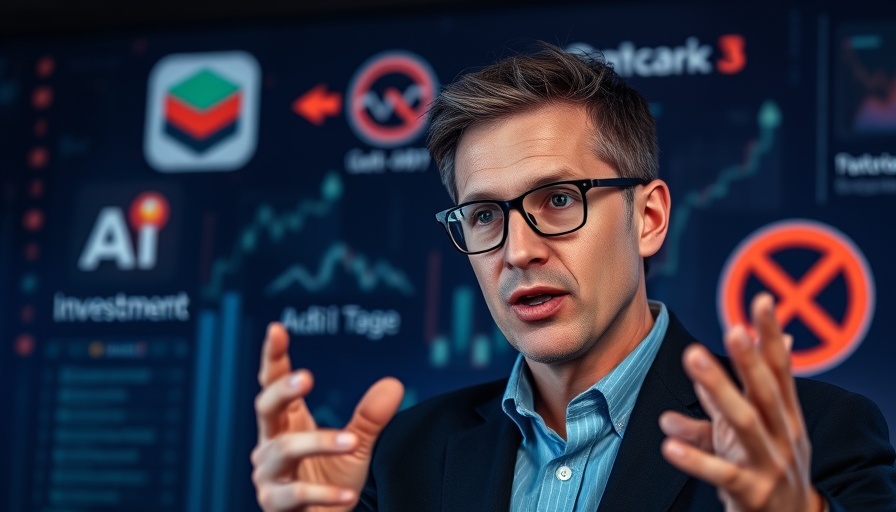
Why Chasing Trends Could Keep You From Smart Investments
In today's fast-paced tech landscape, the allure of artificial intelligence (AI) can be overwhelming. As discussed in the enlightening video '27-Year Investor Explains What You're Missing While Chasing AI,' Terry Doyle, the managing partner of Telus Global Ventures, emphasizes the risks associated with blindly following trends. He recalls his extensive experience in technology investments and underscores a critical lesson: when everyone is excited about the same thing, that's often the signal to take a step back and reassess.
In '27-Year Investor Explains What You're Missing While Chasing AI,' the discussion explores the nuances of technology investment, highlighting perspectives that prompted our in-depth analysis.
The Value of Historical Perspective in Technology
Doyle's career has witnessed numerous technological shifts, including the rise of mobile phones and the dot-com crash. These events have shaped his investment philosophy. By understanding past cycles and their outcomes, investors can better navigate the current landscape. For instance, in 2022, while many were riding the AI hype wave, he opted for a more cautious approach, reinforcing his belief that successful investing requires a discerning eye, particularly when the market seems euphoric.
Data Presentation and Its Impact on Business Outcomes
One area where Doyle has made significant investments is data utilization, especially through companies like Clinia. This company is revolutionizing how businesses approach data, providing AI-driven search capabilities for healthcare providers. By focusing on the presentation and accessibility of data, Clinia enables better decision-making and outcomes. This insight opens up a broader discussion about the importance of innovation in data usage, not just the technology itself.
The Importance of Entrepreneurial Mindset
Doyle argues that investing in people, not just ideas or markets, is paramount for success. The most effective entrepreneurs display problem-solving tenacity, continuing to push forward despite challenges. This perseverance is often more crucial than the entrepreneurs' experience level. For example, many successful companies start with founders who possess a fresh perspective and an ability to think outside conventional wisdom. Identifying these individuals can lead to profitable investments.
The Risk-Reward Balance of Emerging Technologies
As companies explore new avenues such as quantum security, the balance between risk and potential reward becomes critical. Doyle notes that many investors shy away from multi-year horizons on potential investments. However, recognizing that emerging technologies might not be immediately profitable but could revolutionize industries eventually is vital for forward-thinking investments.
Creating a Culture of Innovation and Risk-Tolerance
For any organization, fostering a culture that embraces risk is essential. Doyle shares an approach where mistakes are seen as learning opportunities rather than failures. This mindset encourages innovation, allowing teams to explore potential breakthroughs without the fear of repercussions. By supporting a team culture that is open to experimentation, Telus Global Ventures cultivates an environment where innovation can thrive.
Looking Ahead: Trends to Watch in Technology
The insights shared by Terry Doyle not only shed light on past investment strategies but also provide guidance on future investment opportunities. Areas such as AI usability, sustainable technology solutions, and innovative data handling present significant opportunities for investors willing to look beyond today’s frenzies. As tech developments continuously reshape markets, recognizing the long-term potential of these investments will be crucial.
In conclusion, shifting the focus from immediate trends to understanding emerging technologies and the entrepreneurs behind them can result in more informed, successful investments. As our world becomes increasingly reliant on technology, considering the broader implications and foundational shifts in society will be vital for both investors and consumers alike.
 Add Row
Add Row  Add
Add 




Write A Comment